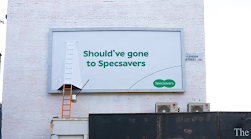Industries: Ownership and control blog tasks
Media conglomerate research
2) Do you agree that governments should prevent media conglomerates from becoming too dominant? Write an argument that looks at both sides of this debate.
Yes I do agree that governments should stop conglomerates from becoming too much dominant. This is because they can control what the media see's and hears, therefore it would be suitable for audiences to hear out other media stories as there is always two sides to everything. However having too many media stories can make it so that it can becoming daunting for the reader and sometimes they will not believe what they read/hear.
Media Magazine reading and questions
Media Magazine 52 has a good feature on the changing relationship between audiences and institutions in the digital age. Go to our Media Magazine archive, click on MM52 and scroll to page 9 to read the article 'Two Key Concepts: The Relationship Between Audience and Institution'.
Media Magazine 52 has a good feature on the changing relationship between audiences and institutions in the digital age. Go to our Media Magazine archive, click on MM52 and scroll to page 9 to read the article 'Two Key Concepts: The Relationship Between Audience and Institution'.
1) Briefly describe the production, promotion and distribution process for media companies.
The production process provides audiences with the media products they want. It needs to consider the audience’s desires and should provide the gratifications the audience expects.
The promotion process researches and identifies the target audience for the product, and uses advertising and marketing strategies to inform and persuade them of the value of the media product.
The distribution process uses the most appropriate methods for getting the product to the audience ,making it as easy as possible for them to access it.2) What are the different funding models for media institutions?
The distribution process uses the most appropriate methods for getting the product to the audience ,making it as easy as possible for them to access it.
The BBC is funded by a licence fee and it has a public service remit, it is more likely to screen programmes with a regional interest than other broadcasters.
3) The article gives a lot of examples of major media brands and companies. Choose three examples from the article and summarise what the writer is saying about each of them.
Disney is known as a family-friendly brand that focuses on children’s entertainment. It has built on its original reputation for animation, created early in the 20th century, through the construction of a ‘universe’ of merchandising and branded products, including Disneyland and the Disney Princess franchise. Parents can feel reassured that a Disney product will provide a wholesome form of entertainment appropriate for children. Disney has used a number of now iconic logos (the dream castle, Walt Disney’s signature, Mickey’s ears) to allow brand recognition across all their products.
Marvel is inextricably associated with the superhero genre as the film production studio developed from its hugely popular original comic book publications. Marvel superhero films may well contain lots of violence; but they will also reinforce mainstream values around duty, sacrifice, personal responsibility and the need for the strong to protect the weak.
4) What examples are provided of the new business models media companies have had to adopt due to changes in technology and distribution?
The music industry can no longer generate most of its profits through the sale of music itself, so other ways to make money have been sought. Sponsorship, merchandising, and the income generated by live shows are some of the ways it seeks to recoup its investment.
5) Re-read the section on 'The Future'. What examples are discussed of technology companies becoming major media institutions?
Amazon, Netflix and Yahoo now create, produce and ‘broadcast’ their own TV shows, such as Transparent, Orange is the New Black and Community.
6) Do you agree with the view that traditional media institutions are struggling to survive?
Amazon, Netflix and Yahoo now create, produce and ‘broadcast’ their own TV shows, such as Transparent, Orange is the New Black and Community.
Yes I do agree. This is because with the rate that media is increasing it is hard for people to catch up and there is just so many things people can watch now.
7) How might diversification or vertical integration help companies to survive and thrive in a rapidly changing media landscape?
it allows these companies to have a safeguard into the future that they can invest into if traditional media starts becoming unprofitable or unsustainable in the new digital climate.
8) How do YOU see the relationship between audience and institution in the future? Will audiences gain increasing power or will the major global media conglomerates maintain their control?
it allows these companies to have a safeguard into the future that they can invest into if traditional media starts becoming unprofitable or unsustainable in the new digital climate.
I think in the future between the audiences and institution is that there will be more dominant audience members. However the power will always stay with the global media conglomerates.

Comments
Post a Comment